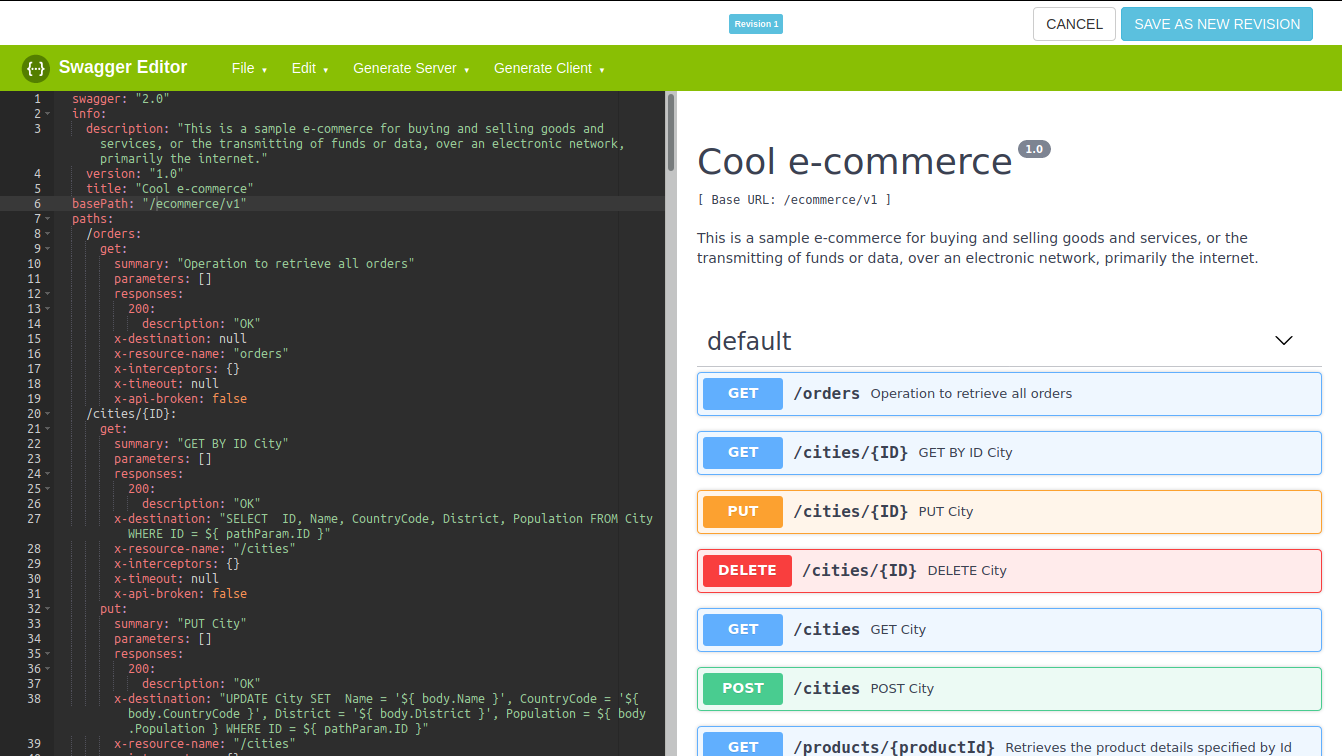
You can use Swagger Codegen to generate client libraries for your API in over 40 languages.The only thing you need to do is to implement the server logic – and your API will be ready to go live. Design-first: You can use Swagger Codegen to generate a server stub for required API.Once API is written, the OpenAPI specification and Swagger tools both can drive the API development further in multiple ways: The ability of an API to describe its own structure is the root of all the awesomeness. The format is very easy to read and learn for humans as well as machines. API specifications can be in JSON or YAML.
#SWAGGER EDITOR ON WINDOWS LICENSE#

OpenAPI Specification (earlier known as Swagger Specification) is an API description format for your REST APIs.
#SWAGGER EDITOR ON WINDOWS CODE#
Helps in generation of server side and client side code and pushes it to Git servers.Better collaboration on API definitions with your team.Saves the common API components (such as data models and responses) in domains and references those from API definitions.Hosts all your API definitions in a single location.Defines the APIs in the OpenAPI format.SwaggerHub can help us to do number of tasks: SwaggerHub integrates the core Swagger tools (Codegen, Editor, UI, Validator) into a single platform which helps to coordinate the complete API’s lifecycle. SwaggerHub is built by the same people which are behind the open-source Swagger tools. SwaggerHub is basically a collaborative platform with its help we can define our APIs via OpenAPI specifications and manage APIs throughout their lifecycle. SwaggerHub is a platform for integrated API development that uses all the core features of the open source Swagger framework, along with additional advanced features to document, build, deploy and manage your APIs. Within a few clicks, Swagger Inspector can generate your OpenAPI documentation and save a lot of valuable development time. Swagger Inspector enables you to automatically generate the OpenAPI file from any end point you provide. Swagger Core is basically a Java implementation of the OpenAPI Specifications.

Swagger parser parses Swagger specs in JSON or YAML format, its a standalone library for parsing OpenAPI definitions in Java Swagger Core Swagger codegen generates the server stubs and all required client libraries from an OpenAPI specification using OpenAPI specification. It reads OpenAPI specification’s json file and renders the interactive page in the browser. Swagger UI is basically a GUI which consists of HTML, CSS and Javascript assets. Swagger UI renders OpenAPI specifications as an interactive API documentation. You can preview the changes at real-time. Swagger editor lets you edit OpenAPI specifications in YAML format inside the browser. Swagger Editor is a browser-based editor in which you can write OpenAPI specs. Swagger framework consists of multiple tools, few of them are explained below: Swagger Editor


 0 kommentar(er)
0 kommentar(er)
